 Web Front-end
Web Front-end JS Tutorial
JS Tutorial Detailed explanation of eventBus implementation of sibling component communication in vue2.0s
Detailed explanation of eventBus implementation of sibling component communication in vue2.0sThis article mainly introduces the example code of eventBus in vue2.0s to implement sibling component communication. It has certain reference value. Interested friends can refer to it. I hope it can help everyone.
In vue1.0, communication between components is mainly achieved through vm.$dispatch propagating upward along the parent chain and vm.$broadcast downward broadcasting. However, in vue2.0, this usage has been abolished.
After the addition of vuex, the communication between components will be clearer. For medium and large projects, it is a wise choice to plan the use of vuex from the beginning.
However, in some small projects, or for people like me who find out that vue2.0 cannot use $.broadcast and $dispatch halfway through writing, a more convenient solution is needed. . Then, the role of eventBus is reflected.
The main practical approach is to introduce a new vue instance among the sibling components that want to communicate with each other, and then realize communication and parameter transfer by calling the event triggering and monitoring of this instance respectively.
Here is a simple example:
For example, we have three components here, main.vue, click.vue, and show.vue. click and show are sibling components under the parent component main, and click traverses multiple list items in the parent component through v-for. What needs to be implemented here is that after the click event is triggered in the click component, the show component will console which DOM element was clicked.
First, we add a click event to the click component
<p class="click" @click.stop.prevent="doClick($event)"></p>
We want to implement the show component in the doClick() method For communication, we need to create a new js file to create our eventBus. We name it bus.js
import Vue from 'vue'; export default new Vue();
so that we create a new vue Example. Next we import it in the click component and show component.
import Bus from 'common/js/bus.js';
Next, we trigger an event in the doClick method:
methods: {
addCart(event) {
Bus.$emit('getTarget', event.target);
}
}Here we click Every time you click in the component, the event named 'getTarget' will be triggered in the bus, and the event.target of the click event will be passed along the event.
Next, we need to call the bus in the created() hook in the show component to listen for this event and receive the parameters:
created() {
Bus.$on('getTarget', target => {
console.log(target);
});
}This way , in each click event of the click component, the event.target will be passed to the show and consoled.
So the use of eventBus is still very convenient, but if it is a medium to large project and the communication is more complicated, it is recommended that you use vuex directly.
Related recommendations:
Vue brother component communication method
Vue.js component communication example sharing
Detailed explanation of event bus non-parent-child component communication in vue
Detailed analysis of several postures in Vue.js component communication
Deep dive into Vue.js components and component communication
The above is the detailed content of Detailed explanation of eventBus implementation of sibling component communication in vue2.0s. For more information, please follow other related articles on the PHP Chinese website!
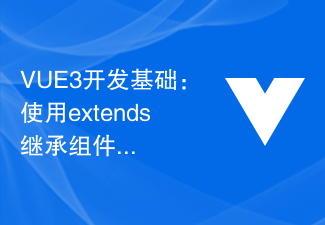 VUE3开发基础:使用extends继承组件Jun 16, 2023 am 08:58 AM
VUE3开发基础:使用extends继承组件Jun 16, 2023 am 08:58 AMVue是目前最流行的前端框架之一,而VUE3则是Vue框架的最新版本,相较于VUE2,VUE3具备了更高的性能和更出色的开发体验,成为了众多开发者的首选。在VUE3中,使用extends继承组件是一个非常实用的开发方式,本文将为大家介绍如何使用extends继承组件。extends是什么?在Vue中,extends是一个非常实用的属性,它可以用于子组件继承父
 聊聊Vue怎么通过JSX动态渲染组件Dec 05, 2022 pm 06:52 PM
聊聊Vue怎么通过JSX动态渲染组件Dec 05, 2022 pm 06:52 PMVue怎么通过JSX动态渲染组件?下面本篇文章给大家介绍一下Vue高效通过JSX动态渲染组件的方法,希望对大家有所帮助!
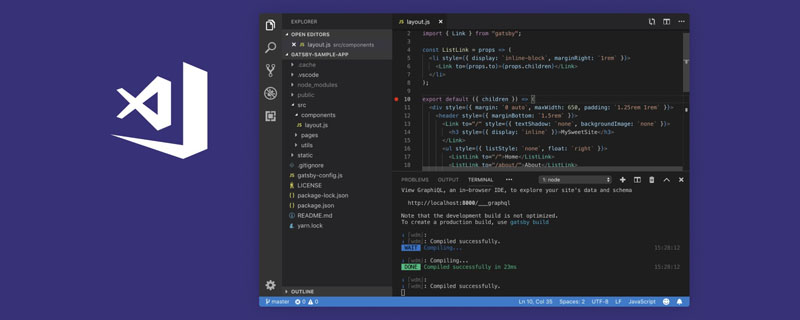 VSCode插件分享:一个实时预览Vue/React组件的插件Mar 17, 2022 pm 08:07 PM
VSCode插件分享:一个实时预览Vue/React组件的插件Mar 17, 2022 pm 08:07 PM在VSCode中开发Vue/React组件时,怎么实时预览组件?本篇文章就给大家分享一个VSCode 中实时预览Vue/React组件的插件,希望对大家有所帮助!
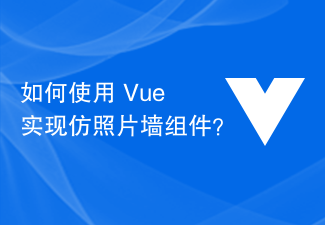 如何使用 Vue 实现仿照片墙组件?Jun 25, 2023 am 08:19 AM
如何使用 Vue 实现仿照片墙组件?Jun 25, 2023 am 08:19 AM在现代Web开发中,组件化是一个极受欢迎的开发模式。而Vue.js则是一个非常适合组件化的前端框架。在这篇文章中,我们将介绍如何使用Vue.js创建一个仿照片墙组件。在开始之前,我们需要明确一些准备工作。首先,我们需要安装Vue.js。安装的方法非常简单,只需在终端中输入以下命令:npminstallvue安装完成后,我们可以创建一个名为
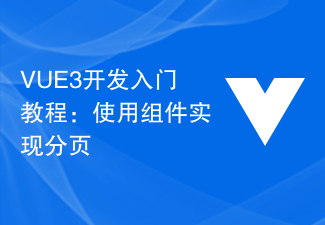 VUE3开发入门教程:使用组件实现分页Jun 16, 2023 am 08:48 AM
VUE3开发入门教程:使用组件实现分页Jun 16, 2023 am 08:48 AMVUE3开发入门教程:使用组件实现分页分页是一个常见的需求,因为在实际开发中,我们往往需要将大量的数据分成若干页以展示给用户。在VUE3开发中,可以通过使用组件实现分页功能,本文将介绍如何使用组件实现简单的分页功能。1.创建组件首先,我们需要创建一个分页组件,使用“vuecreate”命令创建VUE项目,并在src/components目录下创建Pagin
 Vue 中如何实现分页组件?Jun 25, 2023 am 08:23 AM
Vue 中如何实现分页组件?Jun 25, 2023 am 08:23 AMVue是一款优秀的前端框架,在处理大量数据时,分页组件是必不可少的。分页组件可以使页面更加整洁,同时也可以提高用户体验。在Vue中,实现一个分页组件并不复杂,本文将介绍Vue如何实现分页组件。一、需求分析在实现分页组件前,我们需要对需求进行分析。一个基本的分页组件需要具有以下功能:展示当前页数、总页数以及每页展示条数点击分页按钮可以切换至不同页数展示当前页
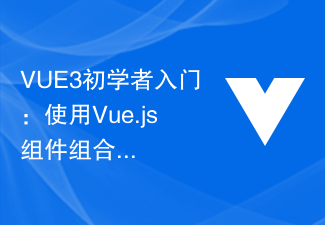 VUE3初学者入门:使用Vue.js组件组合实现可复用组合Jun 15, 2023 pm 08:53 PM
VUE3初学者入门:使用Vue.js组件组合实现可复用组合Jun 15, 2023 pm 08:53 PMVue.js是一款流行的前端JavaScript框架,它提供了一种简单易用的方式来构建动态网页应用程序。Vue.js的主要特点是其模块化的设计和可插拔的组件系统。这使得开发者可以轻松地创建可复用的组件,从而提高了应用程序的重用性和可维护性。在本文中,我们将重点介绍VUE3初学者如何使用Vue.js组件组合实现可复用组合。Vue.js组件是一个完整的封装元素,
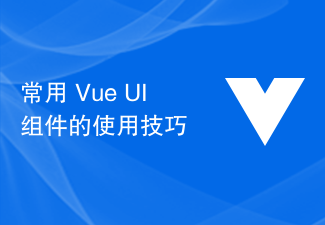 常用 Vue UI 组件的使用技巧Jun 25, 2023 am 08:31 AM
常用 Vue UI 组件的使用技巧Jun 25, 2023 am 08:31 AM在现代Web开发中,UI组件是不可或缺的一部分。Vue.js框架中有许多优秀的UI组件库,如Element-UI、Vuetify、AntDesignVue等。这些组件库提供了许多易于使用的组件,可以帮助我们更加高效地创建Web应用程序。本文将介绍一些常用的VueUI组件,以及使用这些组件的技巧和实用技能。一、El-TableEl-Table是Eleme


Hot AI Tools

Undresser.AI Undress
AI-powered app for creating realistic nude photos

AI Clothes Remover
Online AI tool for removing clothes from photos.

Undress AI Tool
Undress images for free

Clothoff.io
AI clothes remover

AI Hentai Generator
Generate AI Hentai for free.

Hot Article

Hot Tools

SublimeText3 Mac version
God-level code editing software (SublimeText3)

MantisBT
Mantis is an easy-to-deploy web-based defect tracking tool designed to aid in product defect tracking. It requires PHP, MySQL and a web server. Check out our demo and hosting services.

MinGW - Minimalist GNU for Windows
This project is in the process of being migrated to osdn.net/projects/mingw, you can continue to follow us there. MinGW: A native Windows port of the GNU Compiler Collection (GCC), freely distributable import libraries and header files for building native Windows applications; includes extensions to the MSVC runtime to support C99 functionality. All MinGW software can run on 64-bit Windows platforms.

WebStorm Mac version
Useful JavaScript development tools

Safe Exam Browser
Safe Exam Browser is a secure browser environment for taking online exams securely. This software turns any computer into a secure workstation. It controls access to any utility and prevents students from using unauthorized resources.





